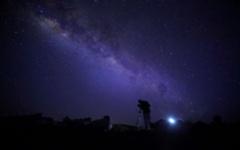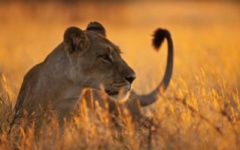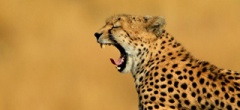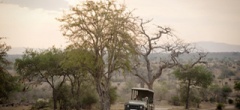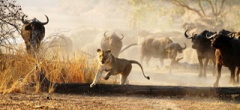When To Go To Africa
to Africa
Choosing the best time to visit Africa...
The best time to visit Africa is a question that we are often asked and plays a fundamental role in an African safari. Generally, the main dry season in East and Southern Africa runs from June until the middle of November when the land is dry and temperatures hit the low 30s. During this period you can look to visit any of the main areas of note throughout the continent although it is worth noting that this is also the busiest period to travel and, as such, the prices are higher and the main sites can be busier with fellow tourists. For this reason it is also worth noting a few of the fringe period throughout 'safari Africa' as these can be very rewarding and less painful on the wallet!
Please see more in depth information on a few of Africa's more popular destinations below:
Zanzibar, Tanzania
Zanzibar offers warm and sunshine-filled days throughout all of the year. That said, the months to avoid are April and May which are the rainy months in Tanzania and Zanzibar. Many of the hotels in Zanzibar are closed during this period and they use the opportunity to work on renovating the properties, and letting the staff have a long holiday to visit their families. The end of March can be very hot and humid as the heat builds up waiting for the rains to come. If you visit during this time, we would recommend staying in a hotel that has air conditioning.
The month of November has short rains – sporadic and heavy rainfalls which are usually followed by bright sunshine. The busiest months in Zanzibar are July and August (school holidays in the UK and Europe) and the festive period in December through to early January. This period fills up very quickly, especially in the most desirable properties, so if you want to travel in this period, please book in advance! For more information on Zanzibar, please read more.
The Masai Mara, Kenya
The beauty of the Masai Mara, is that it is renowned as a year-round destination! The Mara and the Talek River provide a permanent water supply, securing an abundance of resident wildlife, including herds of elephant, prides of lion, dazzles of zebra and many more. The plains of the Mara sit on an altitude of around 2000m, making it generally milder (and damper) than similar regions, but temperatures average at a comfortable 26°C throughout the year and the African sun never lets you down! If you want to see the wildebeest migration, then the best time to go to the Masai Mara is the August to October window. For more information on the Masai Mara, please read more.
The Serengeti National Park, Tanzania
Loosely speaking, the best time to visit the Serengeti National Park is more about the best times to see the wildebeest herds when they are stationary, than about the weather. From June to October the wildebeest herds are located up in the northern part of the park, crossing the mighty Mara River and spilling over into Kenya. From December to March they have moved down to the southern grasslands around Lake Ndutu and are giving birth to their new calves. Seasonally, the June to October window coincides with Tanzania’s dry season with temperatures at a regular 30 degrees and minimal rainfall. For more information, please see more.
The Okavango Delta, Botswana
Famous the world over for being one of the most pristine but also unusual safari destinations in Africa, the reasons for coming to what is, essentially, a floodplain, are multitudinous but, in the main, most will head here between the months of April and October, as the famous floodwaters run through the delta and provide a rally call for many of the animals throughout the southern parts of Africa. For more information, please read more.
The Volcanoes National Park, Rwanda
Rwanda has comfortable temperatures year-round, but in terms of the gorilla trekking, the months of June to early October – the long, dry season – is the best. The primates that are endemic to the Volcanoes National Park (mountain gorillas and golden monkeys) are common and easier to see, as well as other resident animals such as elephant and buffalo. Because of such good conditions, these months in Rwanda are deemed as the peak season to travel. If you are looking to travel during these months, we highly recommend booking in advance to guarantee availability on the accommodation and gorilla permits.
The South Luangwa National Park, Zambia
Compared to many other safari destinations, Zambia is a very seasonal country. The best time to go to South Luangwa National Park is the period between middle of June and October when the park is at its driest and the days are warm with plenty of sun. The game viewing by vehicle and foot, is the most reliable during these months as the animals concentrate around the rivers for their primary water source. The drier the season, the easier it is to spot the wildlife as the vegetation and bushes are grazed down. The wet season outside these months make certain areas of the park extremely difficult, or impossible to access. This is because Luangwa’s infamous black cotton soil becomes extremely sticky and wet, making the roads simply impassable, even for safari 4x4’s! Find out more about the Volcanoes National Park here.
Victoria Falls, Zambia and Zimbabwe
The mighty Victoria Falls marks the boundary between Botswana (just), Zambia and Zimbabwe. This is the place where the waters of the Zambezi River cascade over 100 meters into the “boiling pot” below. A visit to the falls is really a fantastic adventure and something really worth making the effort to do. Again, as with many of the more famous sites in Africa, there is a strong argument to say that you should think of staying away from the busiest areas and benefit from the peace and tranquillity of being further upstream. There is no doubt that a visit to the mighty Victoria Falls at any time of the year will blow you away – the noise, the heat, the moisture, the splash and the overall unique display - but it is worth noting the difference in water volume throughout the months so that you can plan your visit based on the experience it offers. For more information on the water levels, please read more.

